We live in an increasingly global world, which means things that were never available to us before are often right at the tips of our fingers. And one of the benefits of this interconnectedness is getting access to produce that does not grow in our region. Grocery shelves that may once have held mostly apples and bananas now have an abundance of unique and fascinating fruits. However, even though much produce is available year-round, it does not mean they are at their peak freshness. To truly indulge in things, like fruits, at the height of their flavor and freshness, eating them during their growing season is best. So we pulled together a breakdown of which fruits are in season. Keep reading to discover the optimal time to partake.
Spring
Strawberries (Fragaria × ananassa)
Most people are familiar with strawberries, even if they haven’t tasted them. These small, juicy, and heart-shaped fruits are famous for their vibrant red color and sweet taste. They contain vitamin C, antioxidants, and dietary fiber. Enjoy them on their own, add them to salads, use them in baking, or blend them into smoothies.
Apricots (Prunus armeniaca)
These small, golden-orange fruits have a sweet-tart flavor. Apricots are a good source of vitamin A, vitamin C, dietary fiber, and potassium. Enjoy them fresh or in sweet and savory preparations, such as pies, jams, sauces, and salads.
Rhubarb (Rheum rhabarbarum)
Rhubarb is a unique springtime fruit that adds a tasteful flair to desserts. Its long, reddish stalks are tart. You can use them to make pies, crumbles, jams, and sauces. Don’t forget to cook rhubarb with sugar to balance the flavor. Rhubarb is a good source of vitamin K, fiber, and calcium.
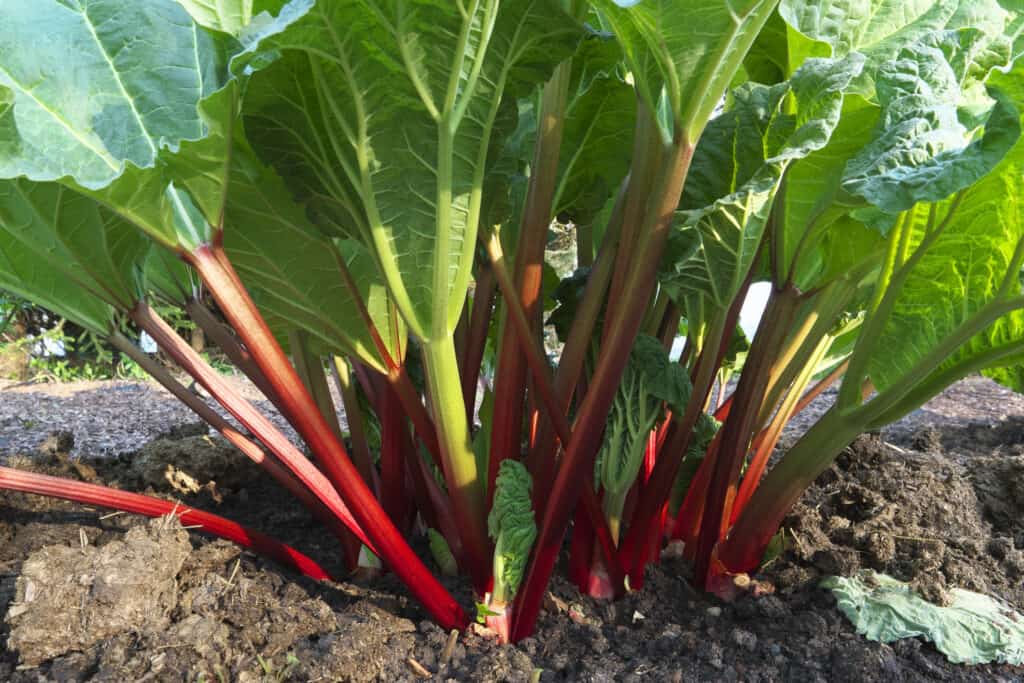
Rhubarb’s tart flavor makes it best suited for sweet dishes.
©iStock.com/veger
Pineapple (Ananas comosus)
This tropical fruit has a sweet and tangy flavor. It is rich in vitamin C, manganese, and bromelain, an enzyme that aids digestion. Pineapples are fantastic fresh, but you can also incorporate them into savory dishes like stir-fries or grilled.
Kiwifruit (Actinidia deliciosa)
This small fruit has a fuzzy brown exterior and vibrant green flesh speckled with tiny black seeds. Kiwifruits have plenty of vitamin C, fiber, and antioxidants. Their unique sweet-tart flavor is tasty on its own. But you can also add them to salads or include them in desserts and smoothies.
Guava (Psidium guajava)
You may or may not have come across guava in your grocery store travels. It is a tropical fruit with a unique flavor that combines sweetness and tanginess. It has a fragrant aroma and a creamy texture. Guava is rich in vitamin C, dietary fiber, and antioxidants. Enjoy it fresh, use it in juices and smoothies, or incorporate it into desserts and savory dishes.

Guava is a flavorful tropical fruit.
©iStock.com/Murilo Gualda
Summer
Blackberries (Rubus spp.)
These juicy and sweet-tart berries come in dark purple to black colors. They contain plenty of antioxidants, manganese, vitamins C and K, and dietary fiber. You can eat Blackberries as they are or add them to breakfast cereals, used in baking, or blended into smoothies.
Papaya (Carica papaya)
If you haven’t yet tried this tropical fruit, you should! Papaya is known for its vibrant orange flesh and sweet, musky flavor. It is an excellent source of vitamin C, vitamin A, folate, and dietary fiber. Add papaya to fruit salads, smoothies, sauces, and dressings, or eat them alone.
Mango (Mangifera indica)
These tropical fruits have sweet, juicy, and aromatic flesh. Mangos are rich in vitamins A and C, as well as dietary fiber, potassium, and magnesium. You can often find many different varieties at the store, each with its unique flavor and texture. Eat them fresh, pop them in salsas, or blend them into smoothies.
Watermelon (Citrullus lanatus)
Everyone’s favorite summer fruit is refreshing and hydrating with juicy, sweet, and crisp flesh. Watermelon is an excellent source of hydration and contains potassium, vitamins A and C, as well as lycopene, a powerful antioxidant. Save some to add to salads or blend into refreshing beverages.
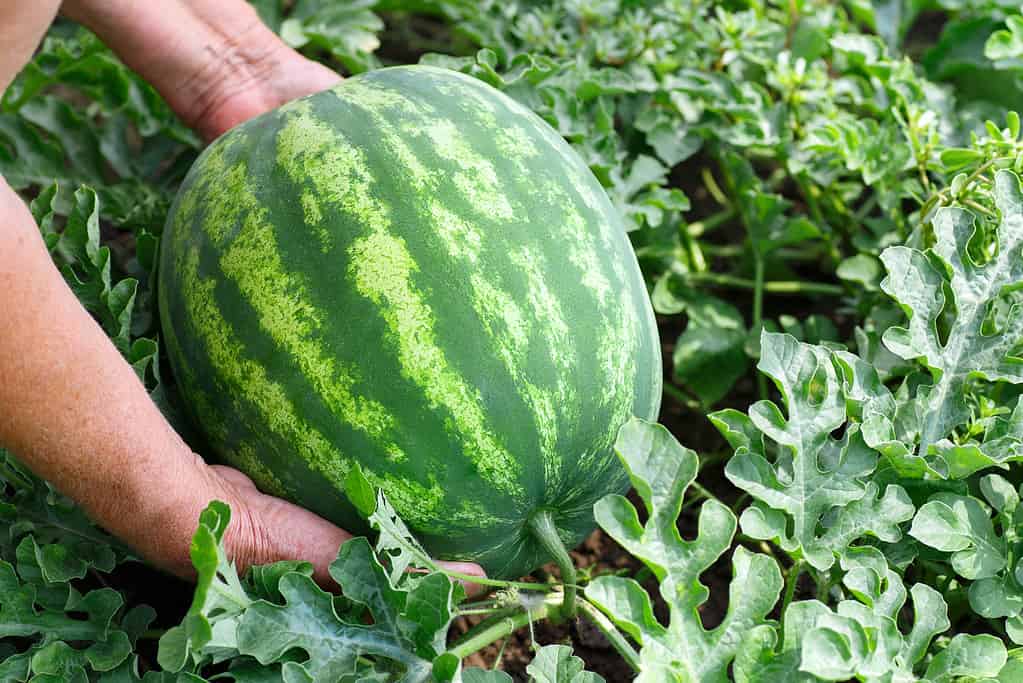
Watermelons are the ultimate summertime treat.
©Alter-ego/Shutterstock.com
Blueberries (Vaccinium sect. Cyanococcus)
These small, round berries have a deep blue-purple color. Blueberries are bursting with a sweet and slightly tangy flavor. They are rich in antioxidants, particularly anthocyanins, as well as vitamins C and K. They can be enjoyed fresh, added to breakfast dishes, added to baked goods, or blended into smoothies.
Peaches (Prunus persica)
Don’t forget these soft, juicy fruits with a sweet and aromatic flavor. Peaches come in many varieties, each with a unique taste and texture. They are rich in vitamins A, K, and C, dietary fiber, iron, and potassium. Enjoy the fresh, grill them for a caramelized flavor, use them in desserts, or add them to countless other dishes.
Plums (Prunus domestica)
Plums are juicy fruits with a sweet and slightly tart taste. Depending on your region, you may find them in various colors, including red, purple, and yellow. They are a rich source of antioxidants, vitamin C, and dietary fiber. They make spectacular jams and tasty pies, but they can also get enjoyed fresh.
Raspberries (Rubus idaeus)
Raspberries are delicate and flavorful berries with a vibrant red color. They have a sweet and slightly tangy taste. Raspberries are rich in potassium, manganese, omega-3 fatty acids, antioxidants, and vitamin C. Eat them fresh, add them to desserts, incorporate them in sauces, blend them into smoothies, or make some jam.
Nectarines (Prunus persica var. nucipersica)
Nectarines are similar to peaches but with a smoother skin. They have sweet and juicy flesh with a hint of tartness. Nectarines are a good source of vitamins A and C, dietary fiber, and antioxidants. Enjoy them fresh, add them to salads, or make jams or preserves with this flavorful fruit.
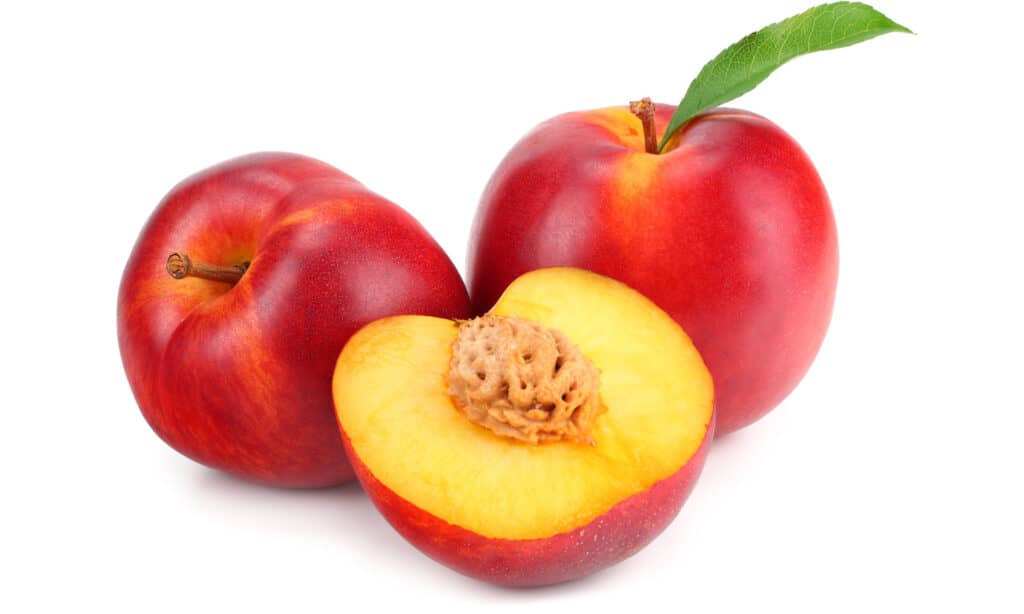
Fresh nectarines are a taste delight and are packed with nutrition.
©iStock.com/Dmytro
Grapes (Vitis spp.)
These small, juicy fruits come in various colors, including green, red, and purple. Grapes are a versatile fruit that makes great snacks and are the basis for wine. They are rich in antioxidants, potassium, and B vitamins.
Cherries (Prunus avium)
This superfood shouldn’t be missed! Cherries are round fruits with a deliciously sweet and slightly tangy flavor. They come in many different colors, including red, yellow, and black. Cherries are rich in antioxidants, vitamins C, K, and A, potassium, and calcium. You can enjoy them in nearly any way you can imagine. They make fantastic juice, jams, desserts, and smoothies.
Fall
Apples (Malus domestica)
Apples are crisp and juicy fruits with nearly endless flavors and textures. They are rich in dietary fiber, vitamin C, and antioxidants. Often people tend to enjoy this tasty fruit fresh. But you can also make apple sauce, baked goods, juice, or add them to savory dishes.
Pears (Pyrus spp.)
These sweet and fragrant fruits have a smooth texture. Pears come in many different varieties that range from crisp and crunchy to soft and buttery. Pears are an excellent source of dietary fiber, vitamins C and K, and potassium. Eat them fresh, use them in desserts and preserves, or add them to salads and cheese platters.
Persimmons (Diospyros kaki)
Chances are you have at least seen this unusual fruit in the supermarket, even if you haven’t tried it. However, it is well worth the plunge. Persimmons are unique fruits with a vibrant orange color and a sweet, honey-like flavor. They are a good source of fiber, vitamins A and C, calcium, phosphorus, and antioxidants. Persimmons can be eaten fresh, added to salads, used in baked goods, or blended into smoothies.
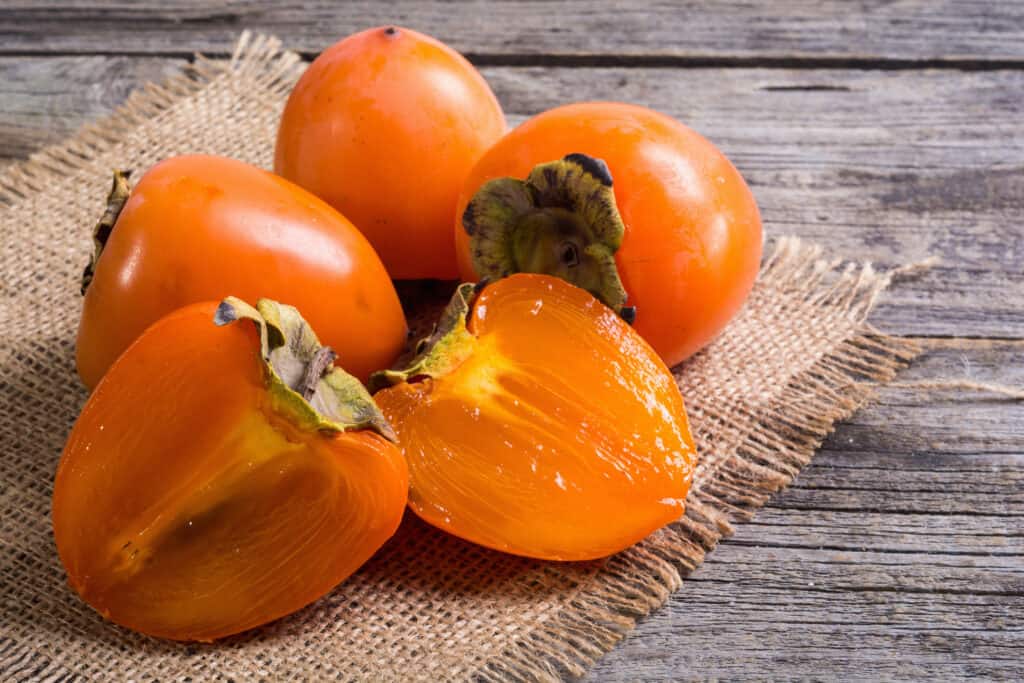
Persimmon fruit is delicious and nutrient-rich.
©AlexeiLogvinovich/Shutterstock.com
Cranberries (Vaccinium macrocarpon)
These small, tart berries are most commonly associated with the holiday season. But don’t discount them during other times of the year. Cranberries are incredibly rich in antioxidants, manganese, vitamin C, and dietary fiber. They make delicious sauces, relishes, and baked goods. Or they can get dried and enjoyed as a snack or added to salads.
Pomegranates (Punica granatum)
This superfruit is unique and nutritious. Pomegranate seeds, known as arils, are what you eat. They are encased in thick, leathery skin and are packed with antioxidants, potassium, vitamins C and K, and fiber. They offer a sweet-tart flavor and a burst of color and texture to many dishes. Experiment with adding them to sweet and savory food (or just enjoy plain).
Figs (Ficus carica)
This small, pear-shaped fruit has soft and sweet flesh. Figs have a unique texture with tiny seeds. Figs are a good source of dietary fiber, magnesium, Vitamin B12, potassium, antioxidants, and more. They can be enjoyed fresh, used in desserts, added to salads, or paired with cheese.
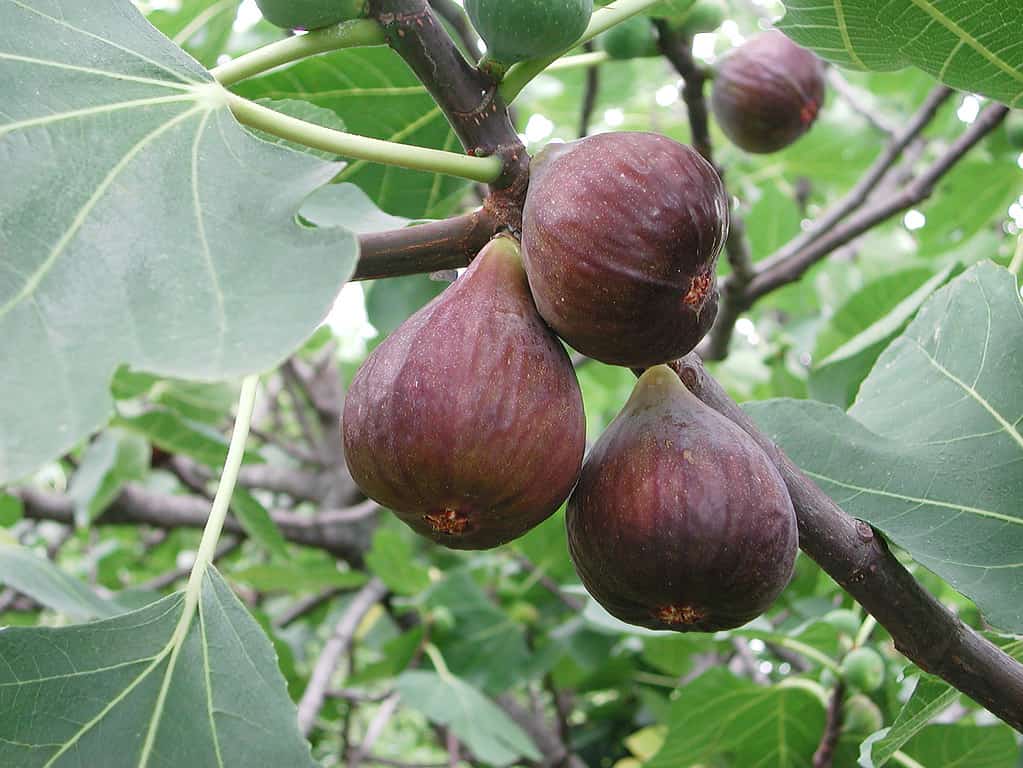
Fig trees produce incredibly delicious fruit in peak season during the fall.
©simona pavan/Shutterstock.com
Dates (Phoenix dactylifera)
Since dates are available year-round, we often forget that they, too, have a season. These sweet, chewy fruits have a rich caramel-like flavor. They are high in dietary fiber, selenium, copper, potassium, and antioxidants. Dates can be eaten on their own, used in baking, or added to smoothies and energy bars to boost nutrition or add some sweetness.
Winter
Oranges (Citrus x sinensis)
This citrus fruit is known for its bright color, juicy flesh, and refreshing flavor. Oranges are an excellent source of flavonoids, vitamin C, dietary fiber, and antioxidants. They are regularly enjoyed as juice but can be eaten fresh, added to salads, or incorporated into other dishes.
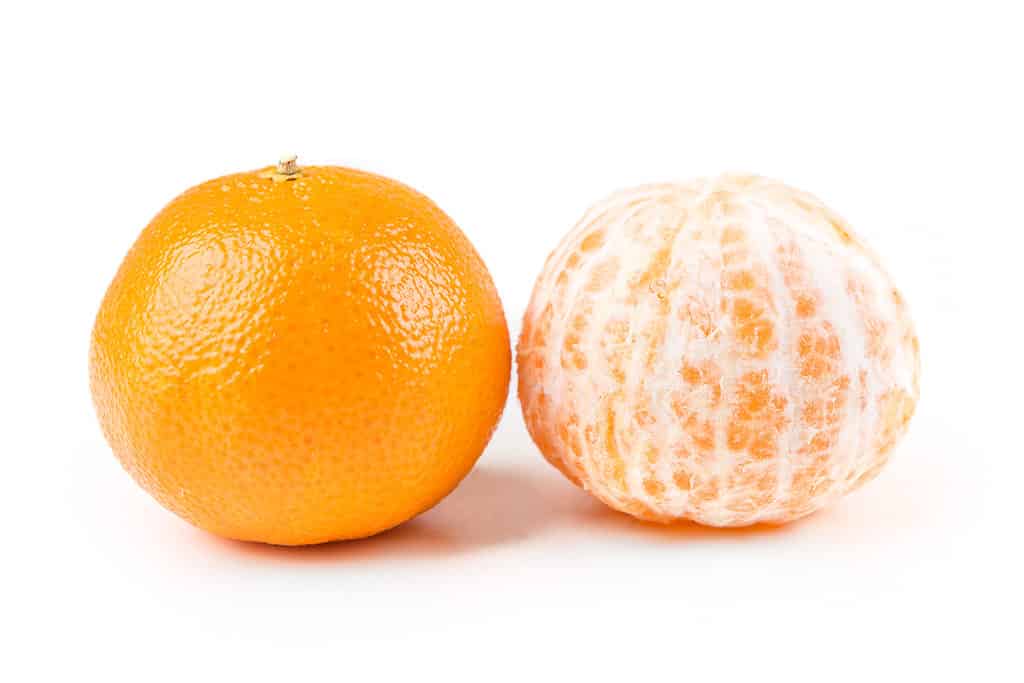
Oranges are a very familiar (and tasty) fruit.
©Elizabeth A. Cummings/Shutterstock.com
Grapefruits (Citrus x paradisi)
Grapefruit is a citrus fruit with a tangy and slightly bitter taste. It comes in different types, including pink, red, and white. Grapefruits contain vitamins C and A, potassium, dietary fiber, and antioxidants. Enjoy their tart flesh fresh, squeeze them into juice, or use them in salads and desserts.
Clementines (Citrus × clementina)
Clementines are small, seedless citrus fruits with sweet and easy-to-peel skin. They are a good source of fiber, vitamin C, and other antioxidants. Take them with you for a convenient and portable snack, add them to fruit salads, or incorporate them in baking and cooking.
Lemons (Citrus limon)
These sour citrus fruits have a bright yellow color and a tangy flavor. Lemons are a rich source of potassium, vitamins C and B6, dietary fiber, and antioxidants. They are widely used in cooking, baking, and added to beverages.
Tangerines (Citrus reticulata)
This sweet and tangy citrus fruit belongs to the mandarin orange family. Tangerines are similar to oranges but smaller in size and easier to peel. They are rich in vitamins C and A, flavonoids, dietary fiber, and antioxidants. Feel free to eat them fresh, add them to salads, or use them in baking and cooking.
Kumquat (Citrus japonica)
Do not pass up this unique fruit the next time you see it at the store! They offer a shocking taste delight. Kumquats are small, oval-shaped citrus fruits that can be eaten whole, including the skin. They have a sweet and tart flavor with a hint of bitterness. Kumquats are a good source of flavonoids, calcium, vitamins C and A, dietary fiber, magnesium, and antioxidants. You can eat them fresh, make preserves or marmalades, or add them to salads and desserts.

Kumquats are delicious and tiny fruit that can get eaten whole.
©aniana/Shutterstock.com
Thank you for reading! Have some feedback for us? Contact the AZ Animals editorial team.








